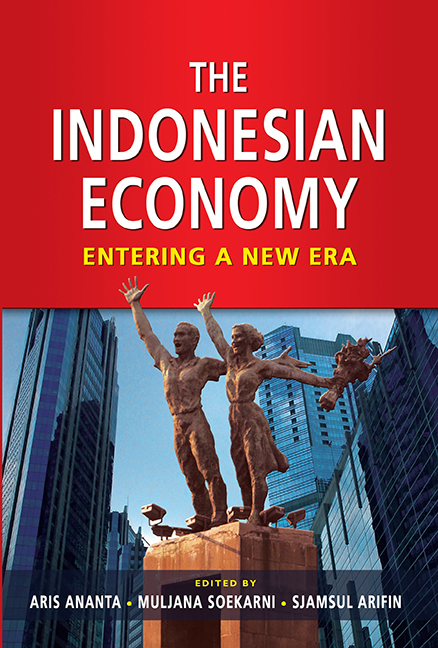Book contents
- Frontmatter
- Contents
- List of Tables
- List of Figures
- Message from the Deputy Governor of Bank Indonesia
- Message from the Director of the Institute of Southeast Asian Studies
- Foreword
- Preface
- Contributors
- PART I INTRODUCTION
- PART II MONETARY AND FISCAL POLICIES
- PART III DOMESTIC ECONOMY
- PART IV SEARCH FOR NEW PARADIGMS
- 10 Embracing ASEAN Economic Integration 2015: A Quest for an ASEAN Business Cycle from Indonesia's Point of View
- 11 Governance and Economic Performance
- 12 A Search for a World Development Paradigm: With Specific Recommendations for Indonesia
- Index
12 - A Search for a World Development Paradigm: With Specific Recommendations for Indonesia
from PART IV - SEARCH FOR NEW PARADIGMS
Published online by Cambridge University Press: 21 October 2015
- Frontmatter
- Contents
- List of Tables
- List of Figures
- Message from the Deputy Governor of Bank Indonesia
- Message from the Director of the Institute of Southeast Asian Studies
- Foreword
- Preface
- Contributors
- PART I INTRODUCTION
- PART II MONETARY AND FISCAL POLICIES
- PART III DOMESTIC ECONOMY
- PART IV SEARCH FOR NEW PARADIGMS
- 10 Embracing ASEAN Economic Integration 2015: A Quest for an ASEAN Business Cycle from Indonesia's Point of View
- 11 Governance and Economic Performance
- 12 A Search for a World Development Paradigm: With Specific Recommendations for Indonesia
- Index
Summary
IN NEED OF REVOLUTIONARY IDEAS
The rising default on subprime mortgages in the United States 2007 was just a trigger for the recent global financial and economic crises. In the past, many worldwide financial crises have occurred, particularly in the emerging markets. Each of these crises, including the recent 2008–09 global crisis, has been preceded by a large inflow of foreign capital, very strong credit growth, excessive leverage, as well as asset (mostly property) price bubbles. Subsequently, asset prices collapsed and a financial crisis came about. The difference between the global 2008–09 crisis and 1997–98 Asian one, however, is that the global crisis started in the United States rather than in the emerging markets as in the 1997–98 crisis. Furthermore, the global crisis was the first crisis that had transpired in the United States since the 1930s Great Depression. Unlike its predecessors, the recent crisis was not just a regional crisis, but rather a global one.
Nobody can hide from the current global meltdown as it hit both the rich and the poor. Nonetheless, the poor has suffered and will continue to suffer the most. This has been the case not only for the recent crisis, but the ones before as well.
The current financial crisis initially hit a selected group of employees, particularly those working in financial sectors, which were mostly comprised of middle and upper income groups. It then spread to real sectors, embracing a wider group of employees, and thus affecting both lower income groups and the poor. In addition, a new group of transitory poor has been created as a result of the crisis. Another important feature of the impact of a crisis on the poor is the role of food expenditure among the poor. Food is usually the biggest component of spending among the poor. Whatever happens to food significantly affects the welfare of the poor, badly or well.
Indeed, Sen (2009a) described 2008 as a year with three crises: food, fuel, and finance. He had even anticipated full-scale depression for 2009, one even larger than the 1930s Great Depression. Fortunately, however, the year 2009 ended differently. Even, Kassel and Jones (2009) concluded that the decade of 2000–09 had ended on a hopeful note, that the world economy had recovered, and growth could continue.
- Type
- Chapter
- Information
- The Indonesian EconomyEntering a New Era, pp. 375 - 406Publisher: ISEAS–Yusof Ishak InstitutePrint publication year: 2011

